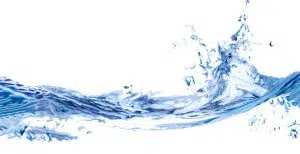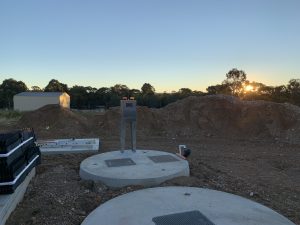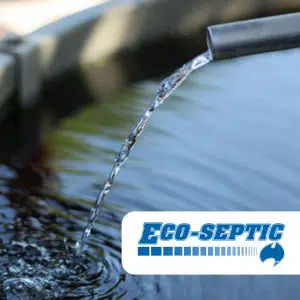How Much Sewage Does A Household Produce?
Households in Australia produce a lot of sewage and wastewater, with individuals producing anywhere from 150 to 350 litres of wastewater per day. As we push for a more environmentally conscious society, there are definitely ways to cut back on the wastewater and sewage that households produce.
In this article, we are going to look at how much sewage a household produces, as well as some solutions that can help us produce less wastewater and sewage. From using home sewage treatment plants to being smarter with our water usage, there are many ways that we can be more environmentally minded when it comes to sewage and wastewater in Australia.
How much sewage does a household produce?

Sewage is a slightly different type of wastewater that contains organic matter. Although we don’t know how much sewage a single household produces, the Australian government estimates about 300,000 tonnes of dry biosolids are recovered from sewage every year.
How is sewage produced in a household?
Sewage is handled via a complex sewerage network that spans entire cities. In Greater Melbourne, for example, 320,000 million litres of raw sewage is pumped through a channel of underground pipes. From here, the sewage will work its way through one of three trunk sewers. These gravity-fed sewers work to transfer sewage to a pumping station.
Once the sewage reaches the pumping station, it is processed at a treatment plant or passed through the sewerage system again.
Home sewage treatment plants
There are ways to improve your water usage and sewage production by investing in a home sewage treatment plant. These plants work by providing a primary and secondary treatment for wastewater produced in your household. Wastewater and sewage will flow from a conventional septic tank, where it is broken down by bacteria – this stage is known as the primary treatment.
Wastewater and sewage will continue to flow into a second tank, where a secondary process of aeration, clarification and disinfection treats the wastewater further. The secondary treatment is essential as it transforms sewage and wastewater into superior quality effluent. This effluent can be used as compost for soil or to help feed lawns. Ultimately, though, it is recycling wastewater and sewage.
Eco-Septic is a Sydney based manufacturer and specialises in commercial wastewater systems of various shapes and designs. We can provide fast and free quotes relevant to your commercial wastewater needs, all while keeping in mind individual spending capabilities.
Contact us today for a fast quote at 1800 808 135 or visit us at www.ecoseptic.com.au.
We cover all Sydney suburbs as well as the regions of South Coast, Snowy Mountains, Southern Highlands, Riverina, Blue Mountains and Hawkesbury, Laguna, North and Mid North Coast, Bateman’s Bay, Nowra, Mallacoota, Narooma, Balmora, Cobargo, Glenn Ines, Avondale, Glenmore, Mogo, Tarago, Torrumbarry, Albury, Faulconbridge, Maraylya, Sherbrooke, Strathdickie, Little Hartley, Linden, cattail, Bowen Mountain, Murwillumbah, Kyogle, Bryon Bay, Lismore, Evan Heads, Yamba, Grafton and surrounding areas.
Related Posts
- Secrets to keeping an Odor Free Septic System
- The Cost of Maintaining Septic Tanks
- The Economics of Septic Systems: Cost Savings and Long-Term Investments
- Our guide to looking for a greywater wastewater pump
- What is a AWTS?
- What Are The Benefits Of Wastewater Treatment?
- Eco-Septic Wastewater Treatment Systems Tailored To Your Needs
- Best Septic Systems – Considerations For Commercial And Residential Use





